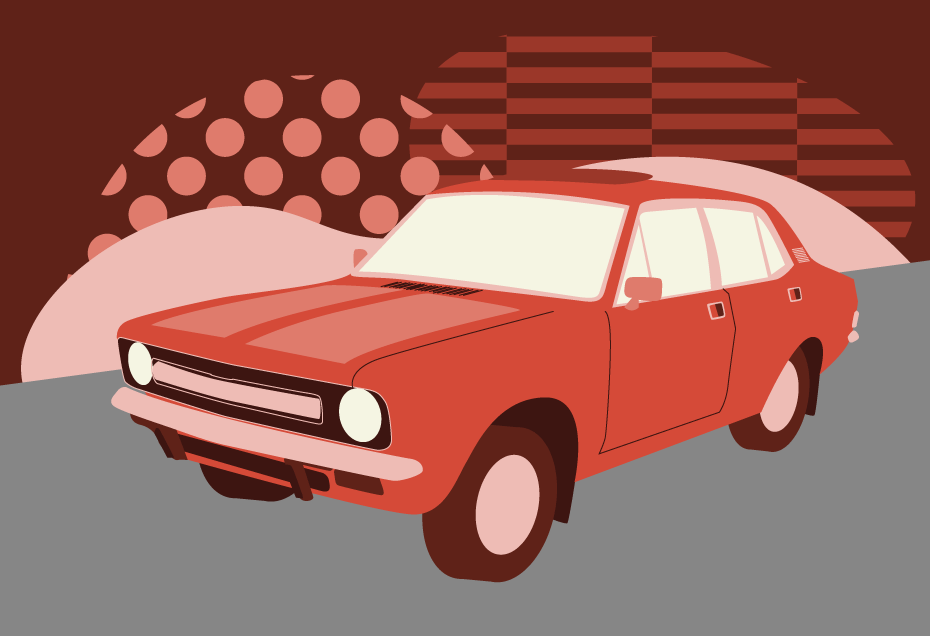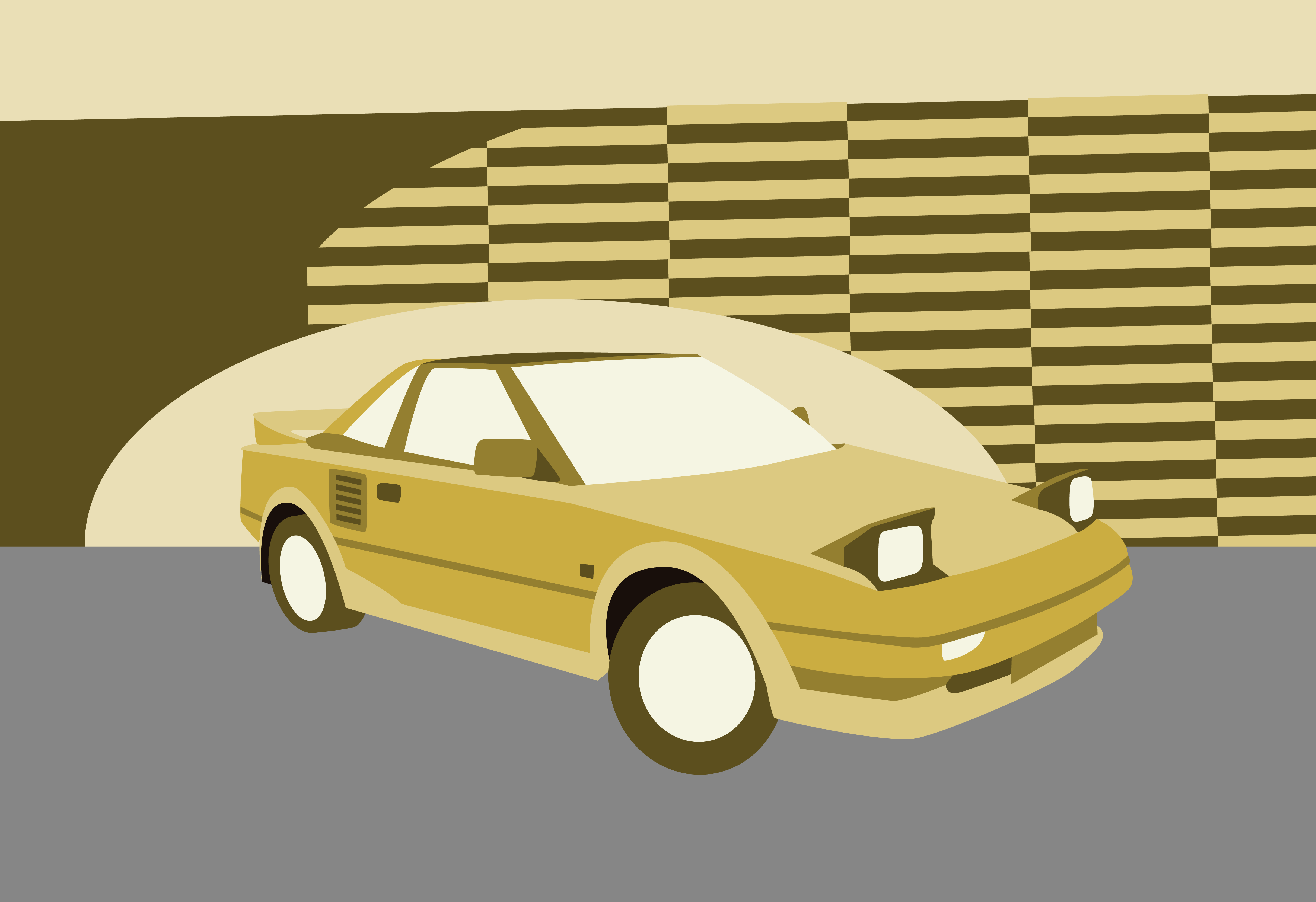It was meant to be the ultimate Cortina-basher, a family saloon to herald a bright new future for British Leyland into the 1970s.
But the Morris Marina never hit the heights, its numerous flaws prompting regular maulings in the motoring press from the moment road testers got the keys to the first cars.
Despite the almost constant criticism, fleet buyers, rental companies and private buyers after a cheap car they could service themselves snapped them up in their tens of thousands.
This is the story of the car Jeremy Clarkson hated so much he dropped a piano on one, infuriating the Marina owners club.
The Morris Marina – codenamed ADO28 – was the first completely new model to emerge from British Leyland, formed in 1968 from the merger of Leyland Motors and British Motor Holdings (BMH), owners of the Austin and Morris marques.

Most of the new manufacturing giant’s board was ex-Leyland, including chairman Sir Donald Stokes, and they could immediately see a problem looming – apart from the imminent Maxi, there were no new models on the BMH drawing board.
And while the 1100/1300 was the nation’s biggest-selling car, loved by private buyers, there was a gaping hole in its offering to the burgeoning fleet market, dominated by the mechanically simpler, and more roomy, Ford Cortina.
BL needed a Cortina rival, and something to replace the anachronistic Morris Minor, and they needed it quickly.
Development of the Morris Marina
To appeal to those fleet buyers, the new car needed to be simple, reliable, and cheap to buy and maintain.
As such, this conventional new car would be badged as a Morris, while the Austin name would continue to be attached to more adventurous cars like the later Allegro, with its Issigonis-inspired transverse-engine, front-wheel-drive layout (and Quartic steering wheel, of course).
The Marina would be resolutely old school – unadventurous and simple, rear-wheel-drive with a live rear axle and largely assembled using parts from the Minor, MGB and Triumph Dolomite, all wrapped by a modern new body.
Harry Webster took charge of the project, and his chief enemy was time, Stokes asking him to have the first car ready for the 1970 Earls Court Motor Show, less than two years away.
Using a stretched version of the Minor chassis as a starting point, Webster tasked Roy Haynes – who had previously designed the mark II Cortina – to produce a body that would conform to the styling trends of the day.

The aim was never to stand out from the fleet crowd, but to become a part of it, although the two-door coupe was pitched as a sporting model for younger buyers.
Haynes’ designs were given the thumbs up by BL bosses in August 1968, ahead of competition from the Italians, Pininfarina and Michelotti.
Harris Mann, who would go on to design the Allegro and TR7, replaced Haynes in 1969, and would later say: “We created it as a nice easy step into the market place – nothing that would offend, something simple and honest.”
Under the bonnet
Originally, Webster had conceived the Marina to sit somewhere between the Ford Escort and Cortina, with engines ranging from 1100cc to 1500cc.
But with Ford’s mark III Cortina – larger than its predecessor – waiting in the wings for a 1970 launch, it was decided to increase the range of engines and try to outperform its prospective competitor.
The 1275cc A-series engine would be used for the entry model, lifted from the MG Midget with only minor modifications.

But plans to adopt the new E-series in 1500cc and 1750cc forms were ditched for the UK market in favour of the tried and tested B-series 1798cc unit, as used in the MGB.
In Australia and South Africa, they persevered with the E-series engine, and the cars were also offered with the larger, six-cylinder, 2600cc version of the E-series.
It wasn’t until 1978 that the B-series was usurped by the overhead camshaft O-series in 1.7-litre form.
Rising costs and cutting corners
The BL board opted to build the Marina at Cowley, an outdated ex-Morris production facility that swallowed up huge amounts of cash, estimated at £45million, in reconstruction work.
In addition, the company built a covered half-mile long overpass between the two Cowley plants that would build and assemble the car, as well as a new gearbox factory at Longbridge.
All of this work ensured that up to 5,500 cars a week could ultimately be built once production was in full swing.
But it did push up the overheads for the new model, and there were fears within BL that the Marina would fail to make a profit if sold at a price that would make it competitive in the marketplace.
The fleet market, in particular, was incredibly price-sensitive, and by early 1969 Austin-Morris managing director George Turnbull insisted the car must be subject to cost-cutting rather than the price raised above a planned £580.
Even at that price, BL bean-counters ultimately thought the Marina may well lose money on each car sold, so Turnbull urged production engineers to put every aspect of the car under the microscope.
The two-piece propshaft was ditched, while Macpherson struts were abandoned in favour of an old design from the Minor, and the coupe version would now utilise the same front doors as the saloon, saving money on tooling and assembly.
Launched at Cannes
There’s no doubt that the Marina was rushed into production out of necessity, and by the end of 1970 the first cars – warts and all – were rolling off the production lines.

Rather than Earls Court, the new car was first shown to the public at Cannes in the spring of 1971, but had already drawn mutterings of disappointment from Motor Sport magazine’s editor Bill Boddy before anyone had even driven it.
“We expected (it) to be an enthralling car, for it is the first completely new model to emanate from the great British Leyland Motor Corporation, and Lord Stokes expressed complete confidence in it when presenting it on a sort of ‘but wait for the ADO 28’ basis,” he wrote.
“In this His Lordship may be entirely justified; we are bitterly disappointed.”
While acknowledging that the aim was to win a large slice of the fleet market, he lamented “the out-dated engineering features of this brand-new BL vehicle”, with its “ancient push-rod power units” and a suspension set up “used almost immediately after WW2”.
“It is obviously the view in Cowley and Berkeley Square that the big buyers, the boys with the brass, shop for dull, so-called-conventional, saloons. These experts in the industry may well be right. If they are, this is a sad reflection on the lack of initiative shown in 1971 by the majority of the nation’s car-buyers.”
Where Boddy wanted Champagne, BL had given him Liebfraumilch.

But had he missed the point? As correspondent R S Whelan pointed out in response: “The Marina is aimed at Mr Average Motorist, the man who gets into his car, turns the key, listens with a sense of wonder as the engine starts, switches off his mind, and sets off. What does he care whether the engine’s in front of him or behind, transverse or fore-and-aft, whether the suspension derives from Moulton or the horse-and-cart?
“His decision to buy a particular model in a particular price-range is brought about by its comfort, its ease of driving, and his wife’s approval of its styling and colour.
“By all means try to enlighten Mr Average, and perhaps one day the Great Motor Sport Dream of the People’s Mid-Engined coupé, magically endowed with room for children and shopping, will come about; but don’t knock the realism of today’s manufacturers.”
George Turnbull, speaking to the Daily Express, backed up this pragmatic view of the Marina’s raison d’être.
“We haven’t abandoned the Issigonis front-wheel-drive concept, but for the new car we gave simplicity, ease of maintenance and value for money the top priority,” he said.
“The engines are the well proven and reliable A- and B-Series BMC products, the gearbox and rear axle are developments of the tough Triumph Vitesse units and the front suspension is the simple but effective torsion bar layout used so successfully on the Morris Minor and Morris 1000.
“We think the family man looking for value for money with simple servicing will buy the Marina, as will the big fleet owners. I am aiming for 10 per cent of the total market and I think I am going to get it.”
Early road tests – big problems
With rushed development came problems, and when the motoring press got their hands on pre-production 1.8-litre models, they encountered almost dangerous levels of understeer.

A serious design flaw in the front suspension left the car intent on trying to charge straight on when taking sharp bends.
Experienced road testers from both Autocar and Motor magazines found themselves on the wrong side of the road, and the editors jointly approached Webster to voice their concerns.
The problem was less pronounced on the 1.3-litre cars, which carried less weight at the front, and Webster promised that a modification was in hand.
A revised lower trunnion on the front suspension at the link between lower arm and swivel introduced more negative camber on cornering, improving but not eliminating the problem.
Nevertheless, several thousand early cars were subject to a recall to have the modification retrospectively fitted.
CAR magazine tested a 1.8TC coupe in August 1971. Far from Roy Haynes’ original concept of a svelte coupe for the younger market, the retention of the saloon’s front doors had left it with a higher roofline than supposed competitors like the Ford Capri.
“To most eyes, the Marina looks ungainly,” wrote the magazine. “In fact no more than a quick, simple, cheap conversion of an existing saloon.”
Which is exactly what it was.
Performance was in line with the MGB, with a slightly higher top speed, but “pronounced understeer” kept cornering interesting…
It described the Marina overall as “something that will appeal to fleet buyers to whom costs are of paramount importance. The fact that the car itself is at best indifferent is a problem for the people who have to drive it rather than the company that owns it.”
Like our illustration of the Morris Marina: British Leyland’s Cortina contender at the beginning of the article?
Download a free high-quality poster version here.
Record sales mark strong start
On May 5, 1971, BL sent out a press release boasting of private sales of 20,000 cars in its first week, with Morris dealers struggling to keep pace with demand.

A further 25,000 Marinas were on order from hire companies and fleets, representing a total sales revenue of more than £40million “breaking all previous records set by a British car manufacturer in the immediate post-launch period”.
What’s more, it claimed that three quarters of sales were at the expense of competitor products.
The press release quoted Vivian Taylor, chairman of Taylors of Penzance, who said: “What a start – a salesman’s dream. Since last Tuesday it has been difficult getting into our own showrooms because of the many would-be purchasers.
“We have had customers driving several miles in the hope of being able to purchase a Marina when they have been unsuccessful with their local dealer or distributor because that outlet has already sold its quota of cars. The significant thing is the high number of customers switching from our competitor’s products.”
Everything seemed to be going according to plan for Filmer Paradise, sales director of BL’s Austin-Morris division, who had expressed his desire to provide “a clear value for money package”.
“We were aiming to take sales from the Cortina, Escort, Avenger and, to some extent, the Viva,” he said. “In fact, we reckoned that half our sales would be what I call ‘conquests’.
“It was our job to give the fleet operators what they wanted, not tell them what they wanted. We looked at what we were good at and known for, strong, quality and reliable engineering, and tried to match it with something we were not so well known for, good looks. We feel we have combined both these qualities in the Marina.”
Industrial action halts production
Just a week after that triumphant press release, the Cowley workforce’s reputation for militantancy reared its head when 80 maintenance fitters went on strike, and Marina production ground to a halt.
Production stopped again in June, and by the end of the month Paradise was telling dealers and distributors not to push for more Marina sales until a backlog of thousands of delayed orders had been reduced.
Despite further industrial strife in 1972, Marina production had gradually increased from an initial 1,000 cars a week to 4,000, including the addition of an estate version.

By the following year, only the Cortina was ahead of the Morris in the UK sales charts, but an array of disputes continued to threaten production, compounded by the compulsory three-day week from January to March 1974 – a result of restrictions on energy usage caused by the oil crisis.
Soft-top Marina
A convertible version of the Marina was never a factory option, but Plymouth-based Mumford, working with conversion specialists Crayford, came up with what Autocar called a “stylish” soft-top version of the two-door car in 1974.

It featured an unusual center-bridged erection distantly resembling a glass-windowed double rollover behind the front seats.
At £2,056, it wasn’t cheap, but the magazine “enjoyed the car” despite the “standard Marina failings” which had been well-documented by then.
On the plus side, Autocar described “excellent minor controls in one of the most simple and convenient of layouts, and a good gearchange of delightfully positive movements and good ratios”.
Marina soldiers on
When it was introduced in 1971, the Marina was only ever meant to last until about 1976, when a new model would take over.
But its planned replacement, ADO77, was scuppered by a combination of BL’s worsening financial crisis and the fact that it would have rivalled too closely the upcoming Princess and Triumph’s planned Dolomite replacement.

Such are the problems when one company has so many marques potentially competing with each other.
So the Marina soldiered on for much longer than was ever intended and, as superior new rivals from Japan and Germany emerged, the Morris was becoming increasingly outdated.
In January 1975, CAR magazine lamented “something of a sad case”.
“You find yourself scrubbing your way around tight corners by having to wind on more and more lock to keep the nose somewhere near your proposed destination,” it wrote.
“The very poor dynamic qualities of the Marina have to be balanced against its space, general simplicity and superior performance. But while the standard of finish may satisfy a fleet operator, private motorists would, quite rightly, be horrified.”
A few months later, the same magazine pulled even fewer punches: “The Marina is an awful car: it’s appallingly finished and its ride is horrendous by modern standards. It is, however, quite economical, it has a strong engine and big boot and its price, in today’s market, is low.”
Facelifted Marina mark II
A subsequent facelift gave the Marina a new grille, dashboard, seats, suspension modifications and better soundproofing.
What Car? pitted the warmed over model in 1.3 coupe form against a Cortina 1300 and a Toyota Corolla in March 1976, and praised a “much-improved car, with none of the terminal understeer which we experienced with previous models”.
“The steering feels light and responsive and the car has a generally nice, chuckable feel to it,” it wrote, noting that engine noise and gearbox vibration still needed to improve.

CAR was less sure that the Marina’s wayward handling had entirely been tamed, testing a 1.8 HL that was now dressed up with a vinyl roof, lights in the grille and new wheel trims.
“It no longer understeers into oblivion, but it’s difficult to describe what it does do instead. On our test bend the car entered understeering, then switched to mild oversteer until the speed had scrubbed away, when understeer set in again. It is a highly disconcerting car to drive because the moment you feel that it is under control, that a bit more of this, and a little less of that will make it do so-and-so, it immediately gets up and does something else.”
The Marina was quicker than a comparable Cavalier and Hillman Hunter, and boasted a sporty, MGB-style exhaust note, but was “harsh, noisy and hard work”.
“The roadholding isn’t up to the performance, and certainly not to the standards that are being set by other, mechanically equally ordinary saloons. It promises a lot but fails miserably.”
Enter the O-Series engine
In 1978, the Marina finally got a new engine, the overhead camshaft, 1698cc O-Series unit, but it did little to enhance the car’s reputation among road testers.
What Car? got hold of a 1.7HL in June 1979, comparing it with a Cortina, Colt Sigma and Mazda Montrose (later 626).
While none of the engines enjoyed being pressed hard, “most disappointing, because it is so new, is the O (for “Oh, dear?”) series unit in the Marina”.
“It is hard to believe this is an ohc engine for it has that mechanical thrashiness over half revs associated with modest pushrod units,” it wrote.
It did, however, have “a gutsy sort of performance that suits the no-frills image of the car…and high overall gearing allows motorway cruising in reasonable peace”.
The car still suffered from a certain amount of understeer and body roll, and it still jumped about rather too much on uneven road surfaces.
It was a better car than the first Marinas, but it was also showing its age, and was replaced in 1980 by the Ital, effectively a Marina with updated styling and a new name…
So was the Marina really that bad?
Throughout its life, and long afterwards, the Marina received a bad press, still regularly appearing in lists of the worst cars ever made.
Without doubt it had multiple flaws, but then it was thrown together in a little over two years, fulfilling a vital role for British Leyland at a time when it desperately needed a mid-range saloon to challenge Ford in the fleet market.
It wasn’t innovative because it was never meant to be; it didn’t have stand-out styling because it wasn’t meant to stand out.
Serious early handling issues were corrected, though never fully went away, and repeated strike action helped to cripple BL when it should have been spending money developing a replacement.
The Marina never managed to hit BL’s stated aim of a 10 per cent market share – the best it did was 6.9 per cent in 1973 – but it did sell well throughout its life, shifting more than 800,000 units in the UK alone.
It’s a rare sight on the roads these days, with 379 survivors in the UK plus another 457 SORN as of September 2020.
Do you own one? Tell us your thoughts in the comments.






